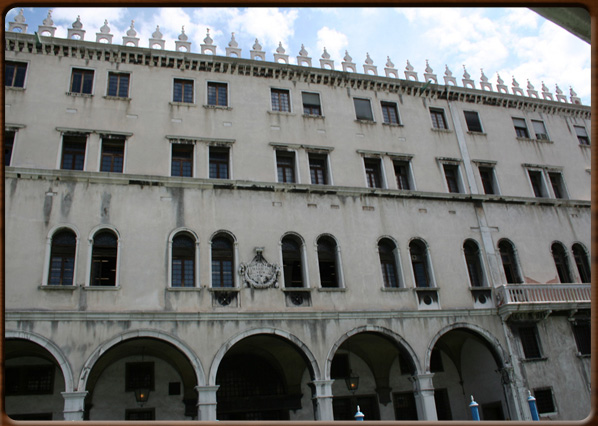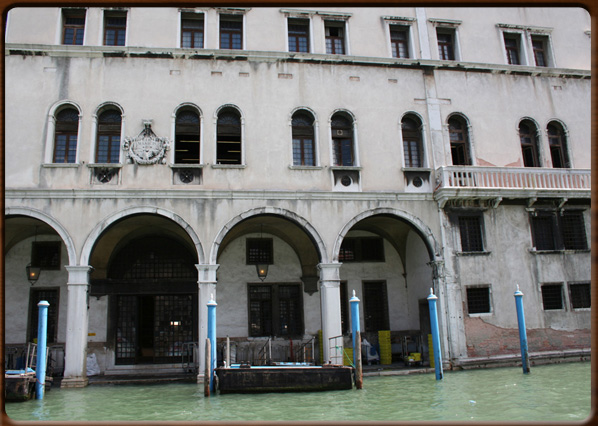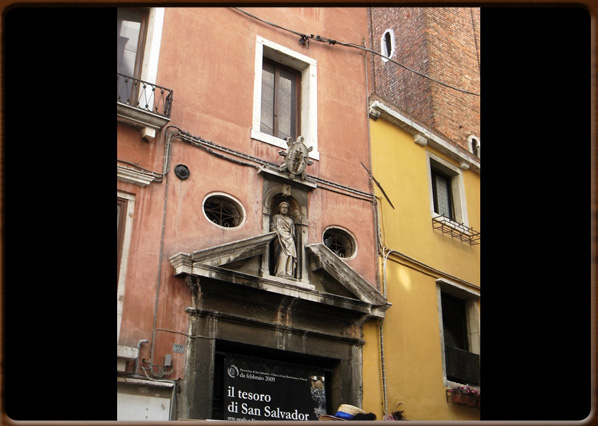
Fondaco dei Tedeschi.

Fondaco dei Tedeschi.

San Bartolomeo on the ononimous campo.



No video
According to some documentary sources the German minority in Venice was already a community by the first half of the 13th Century. The merchants in the Rialto at the Fondaco (Fondaco dei Tedeschi) formed the main nucleus: here foreigners coming from central and northern Europe were accepted and lodged, but also controlled and the scope of their business limited. In the 13th Century, there were roughly 1000 “tedeschi”; over time the German community became one of the largest foreign groups in Venice, along with the Slavs and Greeks.
But, differing in this from the other groups, few Germans expressed a desire or need to acquire Venetian citizenship, as they already enjoyed many privileges, especially of a fiscal nature.
The presence of the Fondaco dei Tedeschi is documented since 1222, when the Venetian State bought the site from the Venetian Zusto family. The Fondaco dei Tedeschi had become necessary as the result of a considerable increase in trade between Venice and the Holy Roman Empire of the German Nation in the second half of the 12th Century, especially thanks to imports of precious metals such as gold, silver and copper from German territories, a trade in which Venetian merchants played a major role.
The term “tedesco” (German) was used at the time to indicate any population in North Europe. In fact, there were also Hungarians, Austrians and Flemish merchants operating in the Fondaco.
The Fondaco dei Tedeschi was originally a public structure funded not by the Venetian State, but by private tenants who paid the Republic an annual fixed sum. In 1268 the Venetian government took direct control of the Fondaco, setting up a special three-member magistracy, the so-called “Visdomini di Fondaco”. The Venetian State then state turned the Fondaco into a formidable machine for tax collection, control of trade and a political observatory.
It seems that the Venetians used the corresponding structures already existing in Byzantium.
The original Fondaco building was destroyed twice by in 1318 and 1505. The sumptuous Renaissance building today was built after the fire of 1505 and took just three years to complete with funds from the Venetian Senate. Designed by the architect Scarpagnino, it has a large courtyard (now covered) with three orders of portico facing this. The façade, with its embattled cornices and a portico on the ground floor, was originally decorated with frescoes by Giorgione and Tiziano.
The large complex structure of the Fondaco was used as a customs house, warehouse, emporium, canteen and inn. At any one time there were 100-120 Germans merchants permanently residing there, together with their goods, and a huge number of workers (packers, porters, cooks, etc.).
After the reformation there was also a resident Protestant priest.
The Fondaco was, by law, the only place where commercial transactions were allowed to take place, either through brokers (known as “messeri” and “sensali”). All goods imported into Venice and those for export were recorded here and went through customs. The law concerning the Fondaco as the sole legitimate trading place in Venice and the ban on external trading by German merchants were so strict that Venetian boatmen were also banned on ferrying goods to any other place.
The trading system of the time saw Venice exported goods acquired in the Levant (spices, drugs, sugar, Greek wine and pepper, etc.) and local precious artefacts (Murano glass, velvet, lace, etc.) to the North European countries, while it imported fur, wool, leather handicrafts, horn objects and, especially, precious metals and alloys from German mines.
Another equally important aspect of economic relations between Venice and the countries in central and northern Europe was control over pilgrims heading towards the Holy Land. Even prior to the 1400s, the volume of trade in Venice was so great that it became the commercial capital of Europe, with the Rialto the heart of commerce, through which all goods passed. Carefully protected and monitored, the Fondaco dei Tedeschi was naturally an important part of the system.
The Germans, unlike other communities, did not live huddled together in a specific area of Venice, but had homes in every parish and district. However, although well integrated in Venetian life and the foreign communities, they were easily identifiable on account of their skills in certain occupations, such as processing wool, printing and medicine. Only small craftsmen like bakers, blacksmiths, tailors and shoemakers began to set up home and shop in the area around the Fondaco in order to serve the merchants, their compatriots, better.
The Germans in Venice were also the first to describe and record the urban geography of the city by producing small easily reproduced woodcuts and copper/steel engravings.
Some sources say that the earliest Germans in Venice came from the Eastern Alps, Vienna, Poland, Hungary and Bohemia. Later, people from along the Rhine came to Venice (a vast virtual region stretching from Basel to Strasbourg) and even from the Netherlands.
The increasingly integrated German community acquired land at the monastery of Santo Stefano in 1383 in order to build a cemetery. The Germans were also owners of hotels and inns where they welcomed their compatriots travelling from the north. In 1504 the German community obtained permission to set up a Scuola in honour of the Madonna del Rosario, in the Church of San Bartolomeo between the Rialto bridge and the Fondaco.
1100 - 1200 - - rev. 0.1.8